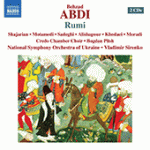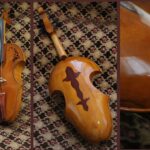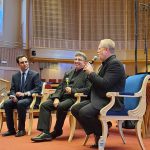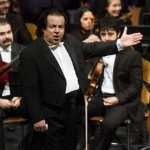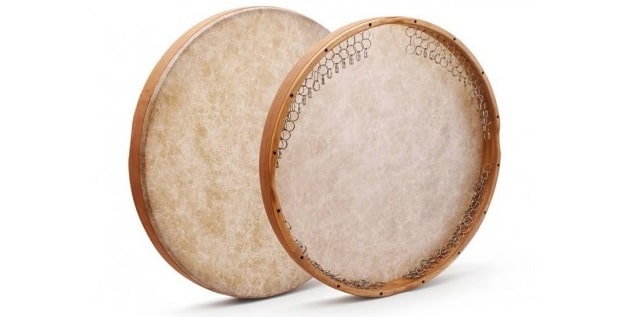
Researcher:
Mohammad Tarighat
Translator:
Fatemeh Alimohammadi
Behrouz Mohammadi, “Daf and its feasts in Ghaderieh’s Tekyeh” mentions that the outer thickness of arch where studs are located, [is] between one to one and a half centimeters (Mohammadi, 2001: 12). The thickness of arch should be gradually reduced from the installation place of rings to skin (Avazeh of Daf) to create a high volume, clear sound from Daf; also, the connection of arch to skin should not be less than one millimeter, because in this case the skin will be torn due to the sharpness of the wood (Mogharab Samadi, 2009: 79-78). The thickness of wood on the skin side is about two to three millimeters (Tohidi, 2002: 79).
The arch is made in “one-layered” or “one-framed” and “two-layered” or “two-framed” according to taste, patience, or skill. The frames of two-framed Dafs are connected with pegs and the total thickness of the frames should not exceed one and a half to two centimeters. The construction of one-framed instruments requires more skill and precision and there is less possibility of deformation in such Dafs; they are lighter than two-framed Dafs, so musicians prefer one-framed Dafs (Nasrollahpour, 2000: 73). The method of connecting two sides of the wood is better to be mitered joint rather than mortise and tenon (Darvishi, 2006: 397).
Although, the manufacturers have provided different sizes for the width of Daf frame and in some cases, Dafs with the title of “women’s Daf 7” and “men’s Daf 8” have been proposed among instrument sellers, it is better to compare the width of frame with the size of player’s palm, so that the knuckle of the thumb does not bend. Such a width will also prevent the wrist from bending in the beat of the middle9 sound.
In the past, Daf players of the monastery used heavy Dafs with a frame six to seven centimeters wide, and to avoid fatigue in long-term performances, they had to use straps around their wrists. They believed that the heavier the Daf is, the easier it would be to perform the techniques. Each Daf weighed about two and a half to three kilograms, which are now known as monastery Dafs. With the passage of time and the creation of new techniques and faster rhythms than before, the weight of the Dafs has been reduced to about 700 to 950 grams to one kilogram, which has also been approved by the musicians of the monastery.
Sara Jabbari – Master of Sports Physiology – believes: “Light weight and excessive weight of Daf will cause no connection with the instrument and takes a lot of energy from the musician. The best weight for Daf is a weight that applies a slight pressure to the forearm muscles. In simple terms, the musician feels the weight of the instrument” (Jabbari, 2022).
Thumb index: The location of the thumb to hold the Daf, which has lost its use due to the narrowing of the frame width. Amir Mogharab Samadi believes that “the size of the thumb index should be commensurate with the height and thickness of the arch, so that the thumb index exactly fills the flesh of thumb” (Mogharab Samadi, 2009: 79). In other words it should be close to the junction of the frame with a small distance, otherwise, after the skin is pulled, the arch will lose its circular shape (Khaktinat, 2004: 62). Deepen about one-third or two-fifths of a span to the left of the frame junction for the thumb (Mohammadi, 2000).

